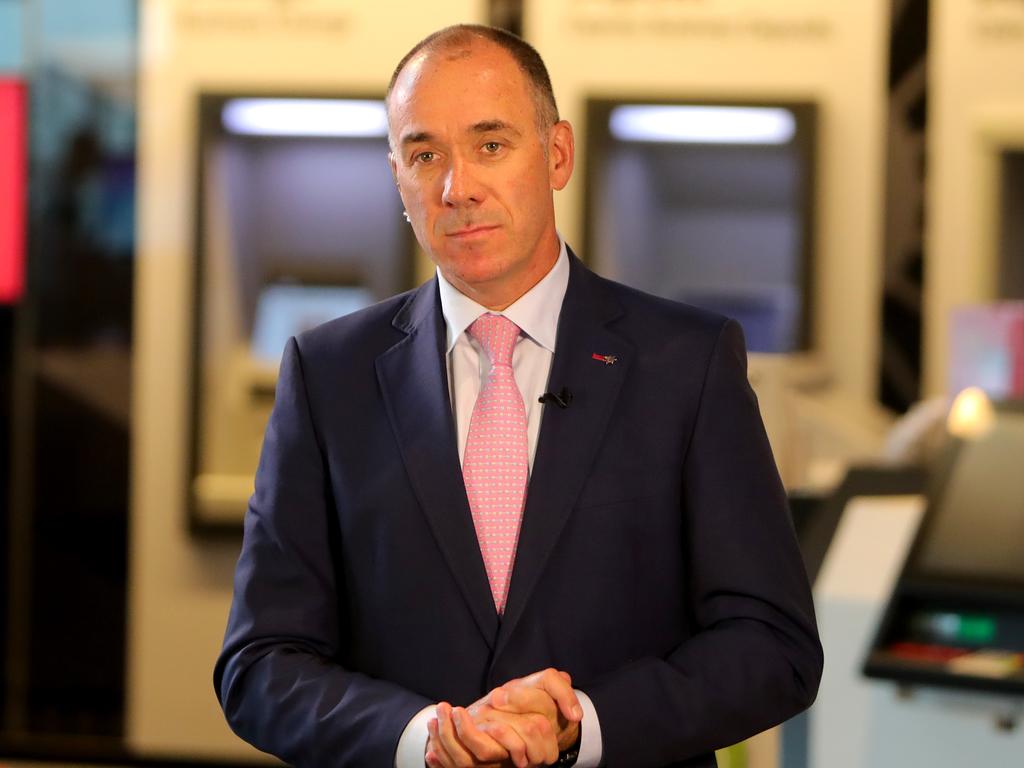Commonwealth Bank annual profit falls 11.3% to $7.3bn, declares lowest dividend since 2006
CBA annual profit declines 11.3% to $7.3bn as the bank declares its lowest dividend since 2006.

Commonwealth Bank has reported a drop in full-year profit to $7.3bn and its lowest final dividend since 2006, as the pandemic hit the economy and saw expected loan losses swell.
CBA’s cash net profit was 11.3 per cent lower at almost $7.3bn for the 12 months ended June 30, the nation’s largest home lender said in an ASX statement on Wednesday. The bank declared a final dividend of 98c, fully franked, adding to an interim payment of $2 per share.
The last time CBA paid a dividend under $1 was in 2006 for the second first-half of the 2005 fiscal year. That payment was 94 cents per share.
Analyst expectations for CBA dividends had varied widely, following the banking regulator’s revised and less-restrictive guidance urging banks to retain at least half their earnings rather than paying chunky dividends. The Australian Prudential Regulation Authority softened its view but still wants banks to preserve capital during COVID-19.
The earlier guidance, released in April, had been for banks “seriously consider” deferring decisions on dividends until the outlook on the pandemic was clearer.
The bank’s chief executive Matt Comyn said despite the challenging environment, operational performance remained strong.
“Combined with our strong balance sheet and capital position, this enables us to continue supporting customers and the economy,” he said.
“The next few months will be critical and some sectors will take longer to recover than others, however, we remain positive about Australia’s long-term prospects.”
CBA expects the domestic economy will contract 4.2 per cent this calendar year, while unemployment will peak at 9 per cent and take “a long period” to retreat from higher levels.
The bank’s shares climbed 1.4 per cent in early trading on Wednesday to $75.75, as investors cheered the payment of a dividend and shrugged off the result slightly missing analyst expectations.
Credit Suisse analysts said the final dividend equated to about 59 per cent of second-half cash earnings and labelled the bank’s annual profit a “solid result”.
The results showed CBA’s loan impairment expense ballooned to $2.5bn for the year due to expectations for COVID-19 related losses, compared to $1.2bn in financial year 2019. The loan impairment expense included $1.5bn set aside for COVID-19.
The bank said 135,000 home loans, or 8 per cent of CBA’s mortgage accounts, had repayments paused due to the pandemic as at July 31. Of the home loans on repayment deferrals about 14 per cent reflected customers that had lost their job and were receiving the federal government’s JobSeeker payment, with more than half of those being joint accounts where only one borrower was out of work.
The number repayment pauses for home loans was down from a peak of 154,000 mortgages.
There were 59,000 business loans, or 15 per cent of total CBA balances, on repayment pauses down from a peak of 86,000.
Analysts had become increasingly concerned about a potential new surge in loan repayment deferrals, given a second wave of COVID-19 infections in Victoria.
CBA’s total operating income edged up 0.8 per cent to $23.76bn in the year ended June 30, buoyed by growth in home loans and deposits. The net interest margin – what the bank earns on loans less funding and other costs – dipped to 2.07 per cent.
Mr Comyn said CBA was prepared for a “range of economic scenarios” and would closely monitor its lending books as the COVID-19 situation evolved.
Analysts had expected CBA to report an annual profit of about $7.4bn.
The bank’s net interest income rose 2 per cent while other revenue, including from fees, declined 4 per cent. Operating expenses inched up 0.7 per cent, due to higher staff, technology and compliance costs.
CBA paid an unchanged interim dividend of $2 shortly before the regulator’s original COVID-19 capital guidance. The final payment of 98c, announced on Wednesday, reflects a dividend payout ratio of 49.95 per cent of the bank’s second-half statutory profit.
UBS analysts pointed out that CBA expected softer credit growth and low interest rates would continue to pressure income, with the bank ratcheting up the negative impact from official rate cuts to seven basis points this financial year.
“There was no incentive for CBA to deliver a strong result in this environment. Lots of moving parts and one-offs,” UBS said. “Underlying business momentum is solid but it faces significant headwinds. Consensus forecasts likely to move lower.”
The CBA dividend will be paid on September 30.
The bank’s common equity tier one capital ratio stands at 11.6 per cent, well above APRA’s “unquestionably strong” threshold of 10.5 per cent.
ANZ and Westpac deferred their first-half dividend decisions while National Australia Bank announced a bumper capital raising but slashed its dividend payment.
CBA’s major rivals, which have a September 30 year end, will provide investors third-quarter updates over the coming week.
The only CBA division to report positive annual growth in cash profit was the retail bank, while all its key units had lower earnings in the second-half compared to the prior six months.
Total cash net profit for CBA’s continuing operations fell to $7.3bn in the year ended June 30, from $8.22bn. The bank has sold a spate of divisions including its global asset management unit and life insurance arm.








To join the conversation, please log in. Don't have an account? Register
Join the conversation, you are commenting as Logout